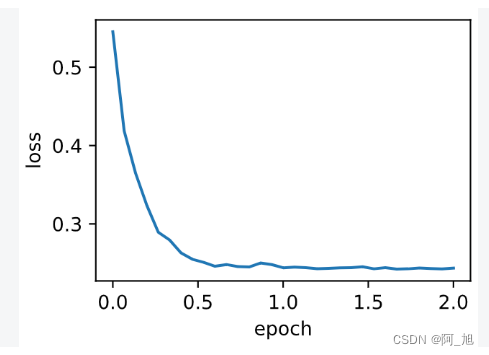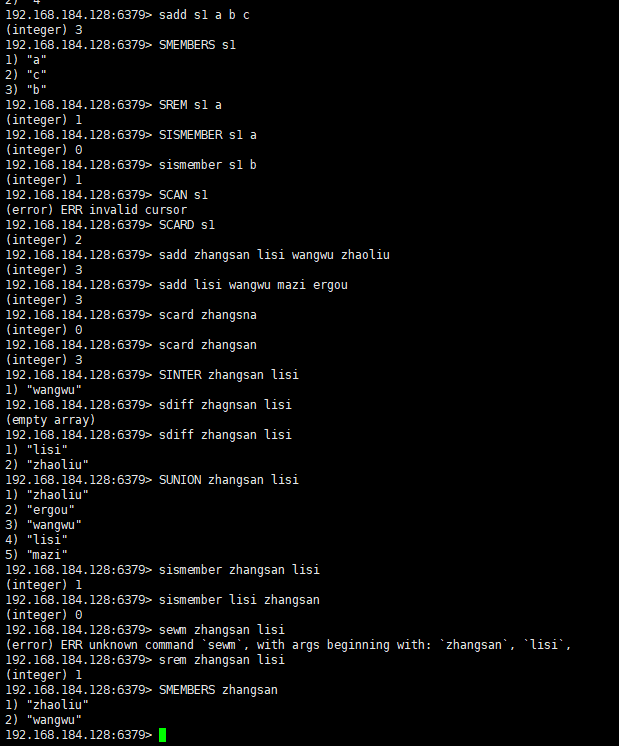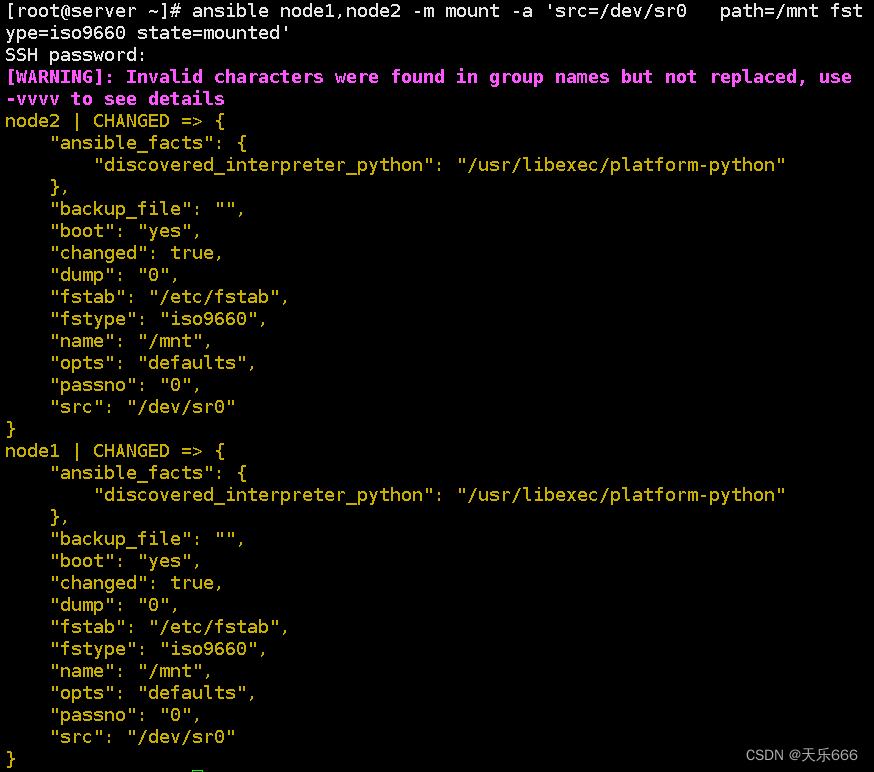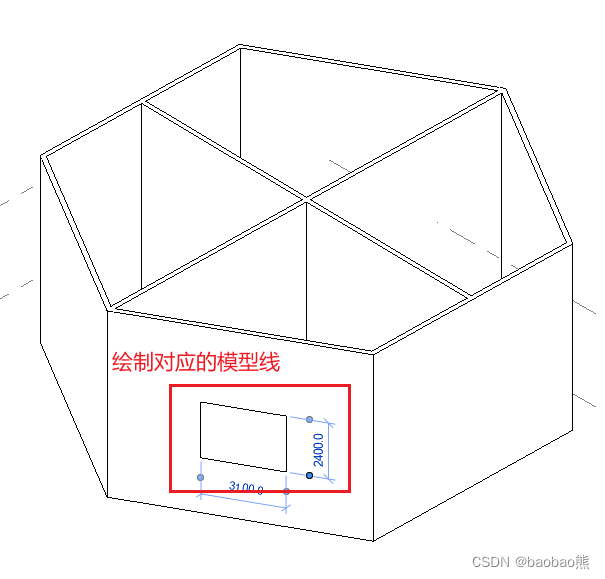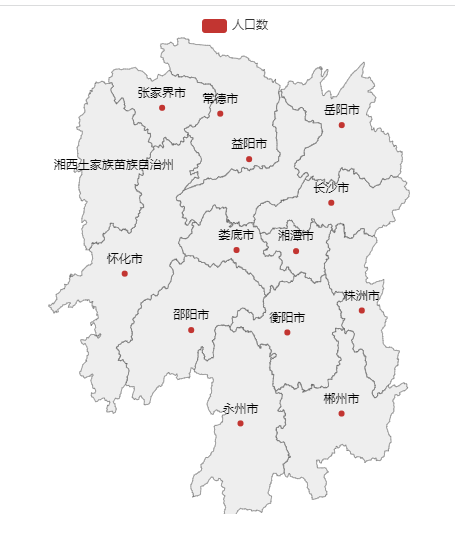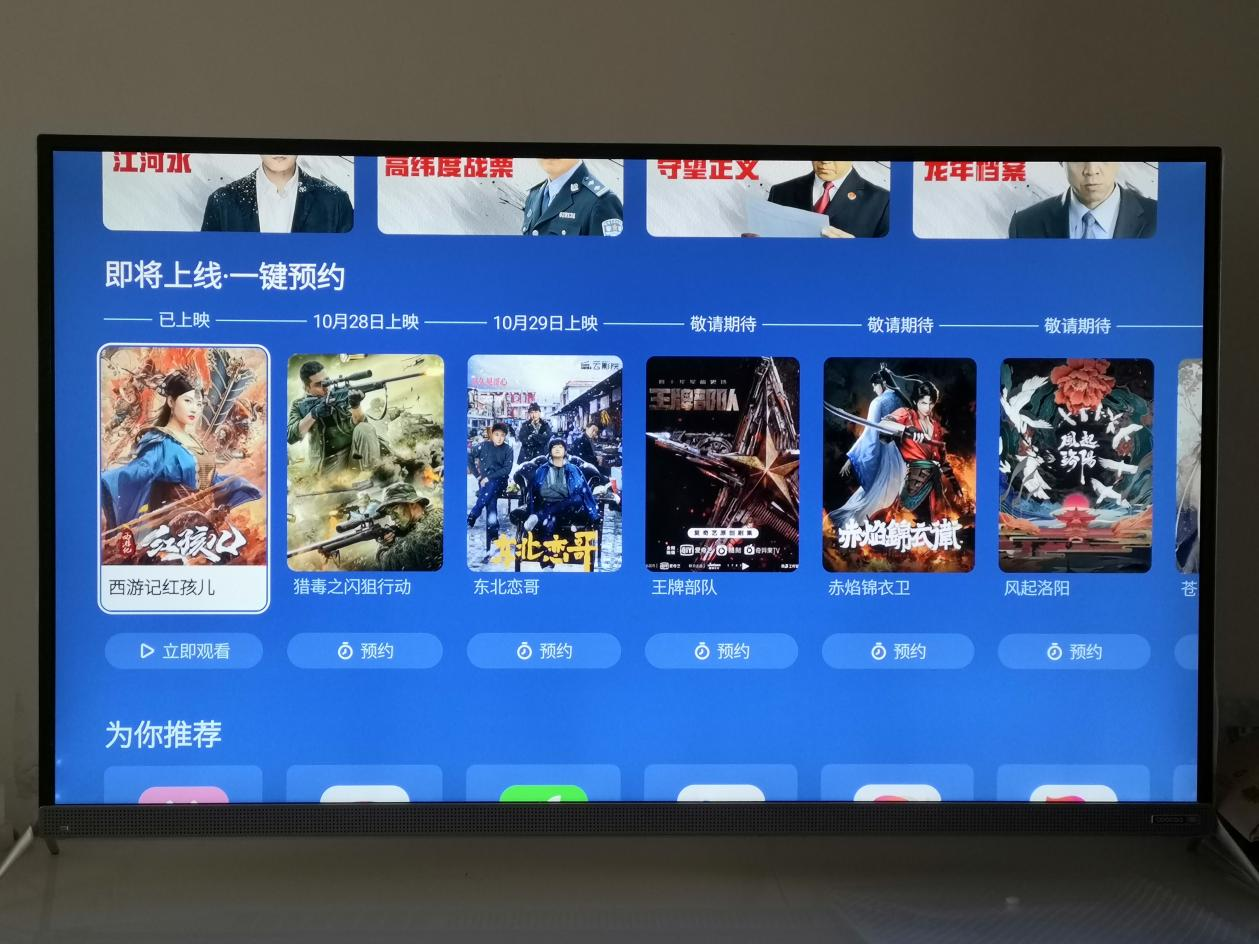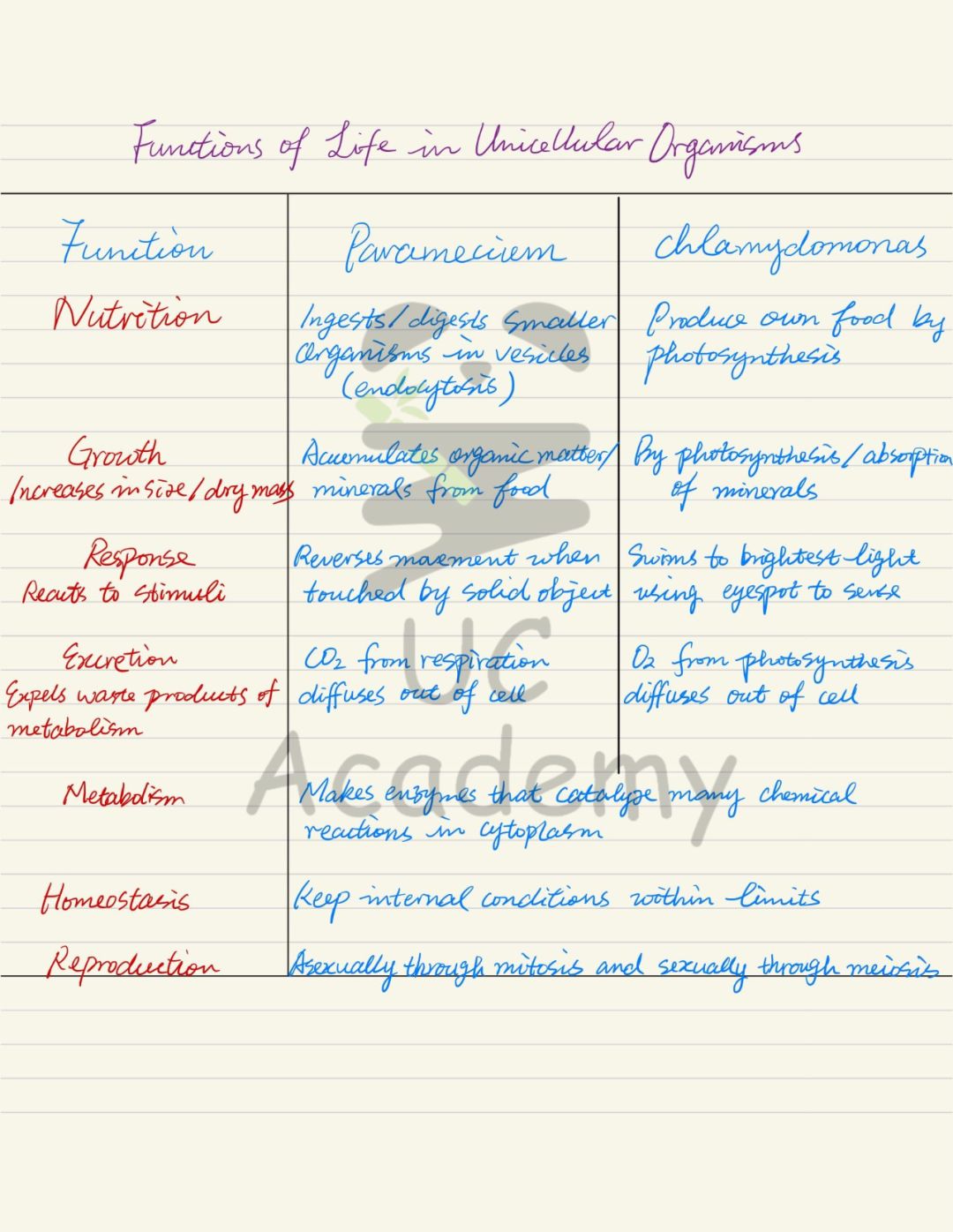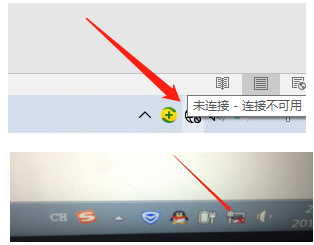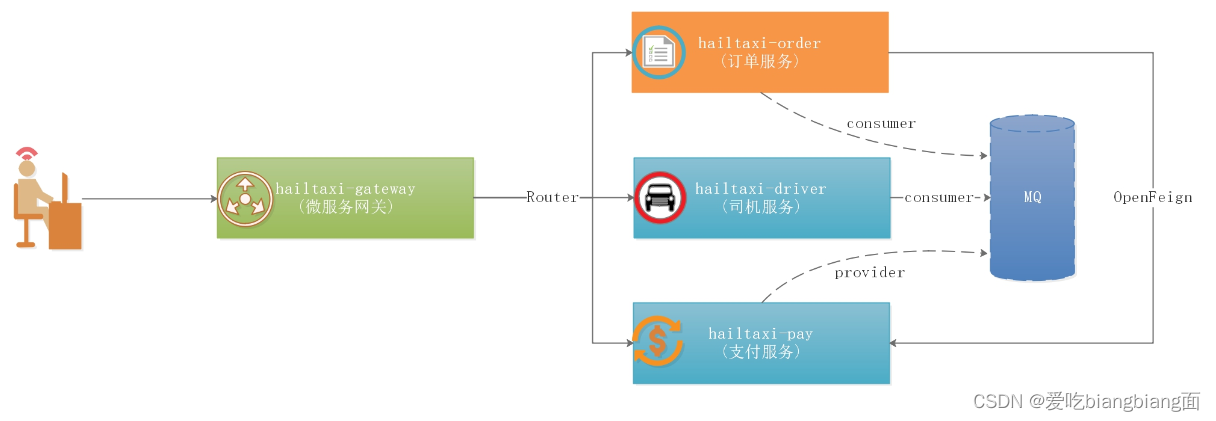
- 栈
1.1 栈的概念
栈:一种特殊的线性表,其只允许在固定的一端进行插入和删除元素操作。进行数据插入和删除操作的一端称为栈 顶,另一端称为栈底。栈中的数据元素遵守先进后出,后进先出的原则(LIFO——Last In First Out)。
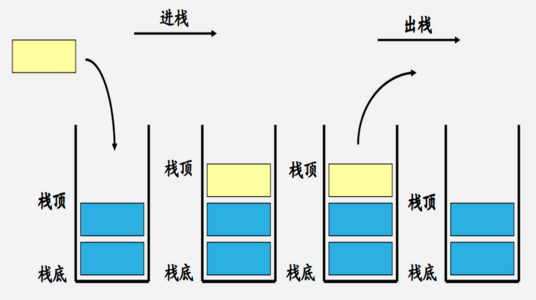
举几个栈在现实生活中的例子,如:羽毛球放进羽毛球筒里,第一个放的最后一个拿,而最后放的最先拿到。

再比如,子弹装入弹匣,最先装的最后打出,而最后装的,最先打出。
1.2 栈的方法
方法 | 功能 |
Stack() | 构造一个空的栈 |
E push(E e) | 将e入栈,并返回e |
E pop() | 将栈顶元素出栈并返回 |
E peek() | 获取栈顶元素,并且该栈顶元素不动 |
int size() | 获取栈中有效元素个数 |
boolean empty() | 检测栈是否为空 |
对比其他的数据结构,可以发现栈是一种较为简单的数据结构,主要特征便是先进后出,里面的方法也较其他数据结构数量更少。
import java.util.Stack;
public class Text {
public static void main(String[] args) {
Stack<Integer> stack = new Stack<>();
stack.push(0);
stack.push(1);
stack.push(2);
stack.push(3);
stack.push(4);
stack.push(5);
System.out.println(stack.size());
System.out.print(stack.pop()+" ");
System.out.print(stack.pop()+" ");
System.out.print(stack.pop()+" ");
System.out.print(stack.peek()+" ");//返回栈顶元素,但该元素依旧留在栈顶
System.out.print(stack.peek()+" ");
System.out.print(stack.pop()+" ");//返回栈顶元素,并将该元素出栈
System.out.print(stack.pop()+" ");
System.out.println(stack.pop()+" ");
System.out.println(stack.empty());
}
}输出:
6
5 4 3 2 2 2 1 0
true
1.3 栈的模拟实现
栈的实现,可以使用数组,那就是个顺序栈,而如果使用链表,那就是链式栈,而若是使用单链表的话,拿就只能头插头删,只有这样的时间复杂度才都是 O(1);而如果使用的是双向链表的话,也是头插头删:
public static void main(String[] args) {
LinkedList<Integer> stack = new LinkedList<>();
stack.push(1);
stack.push(2);
stack.push(3);
stack.push(4);
System.out.println(stack.peek());
System.out.println(stack.pop());
System.out.println(stack.pop());
System.out.println(stack.pop());
System.out.println(stack.pop());
}输出:
4
4
3
2
1
在 LinkedList 类的源代码中,也有跟栈一样的方法,发现 push 是头插,且 pop 也是头删:

下面的一个模拟实现,是用数组来实现的。
import java.util.Arrays;
public class MyStack {
public int[] arr;
public int usedSize;
public MyStack() {
arr = new int[10];
}
public int push(int data){
if(isFull()){
arr = Arrays.copyOf(arr,arr.length + 10);
}
arr[usedSize] = data;
usedSize++;
return data;
}
private boolean isFull(){
return usedSize == arr.length;
}
public boolean isEmpty(){
return usedSize == 0;
}
public int pop(){
if(isEmpty()){
throw new EmptyStackException("The Stack is empty!");
}
// int val = usedSize-1;
// usedSize--;
// return arr[val];
//又或者写成如下更加简便的形式:
return arr[--usedSize];
}
public int peek(){
if(isEmpty()){
throw new EmptyStackException("The Stack is empty!");
}
return arr[usedSize-1];
}
public int size(){
return usedSize;
}
}题目 最小栈中:
在 push 函数中,else 的代码块中,if(val <= minStack.peek()) ,也就是说,stack 里如果出现相同的最小元素,也要存放到 minStack 中,
而在 pop 函数中, int val = stack.pop (拆箱了),后面if 判断 就可以写成 if(val == minStack.peek())
1.4 栈的使用场景
1.4.1 逆序打印链表
这个题目,采用以下两种方法来求解:
方法一:递归打印
//递归打印链表
public static void playList(Node pHead){
if(pHead == null){
return ;
}
if(pHead.next == null){
System.out.println(pHead.val);
return ;
}
playList(pHead.next);
System.out.println(pHead.val);
}方法二:使用栈来打印
//使用栈来逆着打印单向链表
public static void playList1(){
Stack<Node> stack = new Stack<>();
Node cur = head;
while(cur != null){
stack.push(cur);
cur = cur.next;
}
while(!stack.isEmpty()){
Node temp = stack.pop();
System.out.print(temp.val+" ");
}
System.out.println();
}1.4.2 括号匹配
给定一个只包括 '(',')','{','}','[',']' 的字符串 s ,判断字符串是否有效。
有效字符串需满足:
左括号必须用相同类型的右括号闭合。
左括号必须以正确的顺序闭合。
每个右括号都有一个对应的相同类型的左括号
class Solution {
public boolean isValid(String s) {
Stack<Character> stack = new Stack<>();
for(int i = 0; i < s.length() ;i++){
char ch = s.charAt(i);
if(ch == '(' || ch == '{'||ch == '['){
stack.push(ch);
}else{
if(stack.empty()){
return false;
}
char ch2 = stack.peek();
if(ch == ')' && ch2 == '(' || ch == '}' && ch2 == '{' || ch == ']' && ch2 == '['){
stack.pop();
}else{
return false;
}
}
}
if(!stack.empty()){
return false;
}
return true;
}
}1.4.3 逆波兰表达式求值
给你一个字符串数组 tokens ,表示一个根据 逆波兰表达式 表示的算术表达式。
请你计算该表达式。返回一个表示表达式值的整数。
class Solution {
public boolean isOperation(String x){
if(x.equals("+") || x.equals("-") || x.equals("*") || x.equals("/")){
return true;
}
return false;
}
public int evalRPN(String[] tokens) {
Stack<Integer> stack = new Stack<>();
for(String x : tokens){
if(isOperation(x)){
int num2 = stack.pop();
int num1 = stack.pop();
switch(x){
case "+":
stack.push(num1 + num2);
break;
case "-":
stack.push(num1 - num2);
break;
case "*":
stack.push(num1 * num2);
break;
case "/":
stack.push(num1 / num2);
break;
}
}else{
stack.push(Integer.parseInt(x));
}
}
return stack.pop();
}
}1.4.4 栈的压入、弹出序列
输入两个整数序列,第一个序列表示栈的压入顺序,请判断第二个序列是否可能为该栈的弹出顺序。假设压入栈的所有数字均不相等。例如序列1,2,3,4,5是某栈的压入顺序,序列4,5,3,2,1是该压栈序列对应的一个弹出序列,但4,3,5,1,2就不可能是该压栈序列的弹出序列。
import java.util.ArrayList;
import java.util.Stack;
public class Solution {
public boolean IsPopOrder(int [] pushA,int [] popA) {
int j = 0;
Stack<Integer> stack = new Stack<>();
for(int i = 0; i < pushA.length;i++){
stack.push(pushA[i]);
while(j < popA.length && !stack.empty() && stack.peek().equals(popA[j])){
stack.pop();
j++;
}
}
if(!stack.empty()){
return false;
}
return true;
}
}注意:stack.peek() == popA[j] 最好修改成 stack.peek().equals(popA[j])
1.4.5 最小栈
设计一个支持 push ,pop ,top 操作,并能在常数时间内检索到最小元素的栈。
实现 MinStack 类:
MinStack() 初始化堆栈对象。
void push(int val) 将元素val推入堆栈。
void pop() 删除堆栈顶部的元素。
int top() 获取堆栈顶部的元素。
int getMin() 获取堆栈中的最小元素。
class MinStack {
private Stack<Integer> stack ;
private Stack<Integer> minStack;
public MinStack() {
stack = new Stack<>();
minStack = new Stack<>();
}
public void push(int val) {
stack.push(val);
if(minStack.empty()){
minStack.push(val);
}else{
if(val <= minStack.peek()){
minStack.push(val);
}
}
}
public void pop() {
if(!stack.empty()){
Integer val = stack.pop();
if(val.equals(minStack.peek())){
minStack.pop();
}
}
}
public int top() {
if(!stack.empty()){
return stack.peek();
}
return -1;
}
public int getMin() {
return minStack.peek();
}
}1.5 栈、虚拟机栈和栈帧的区别
栈是一种先进后出的数据结构,虚拟机栈是运行程序时的内存,而方法在虚拟机栈开辟的内存就叫栈帧。
2. 队列(Queue)
2.1 队列的概念
队列:只允许在一端进行插入数据操作,在另一端进行删除数据操作的特殊线性表,队列具有先进先出的原则。(FIFO——First In First Out)
入队列:进行插入操作的一端称为队尾(Tail/Rear) 出队列:进行删除操作的一端称为队头 (Head/Front)
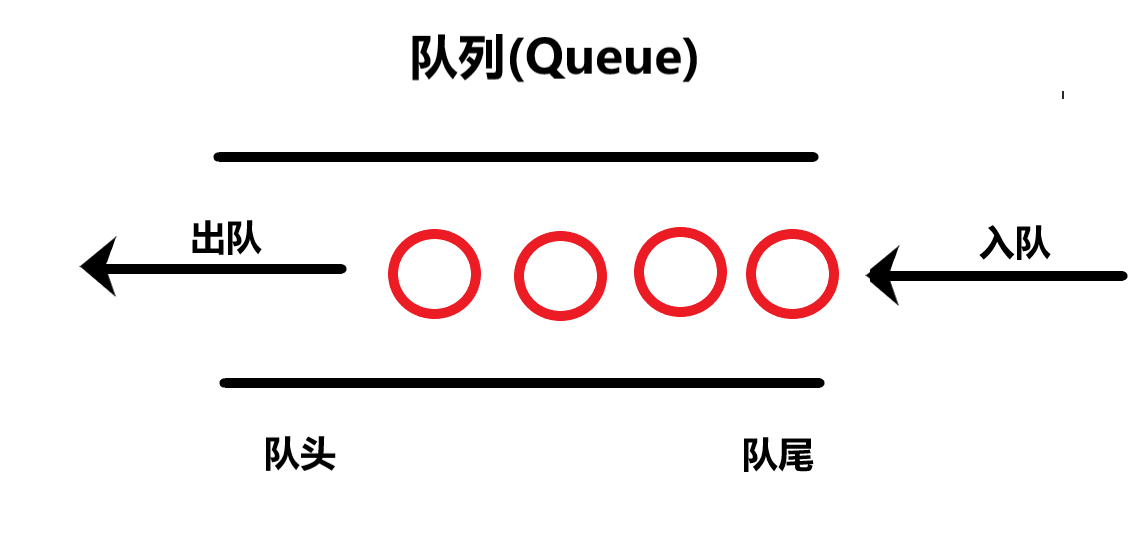
2.2 队列的方法
在Java中,Queue是个接口,底层是通过链表实现的。
方法 | 功能 |
boolean offer(E e) | 入队列 |
E poll() | 出队列 |
E peek() | 获取队头元素 |
int size() | 获取队列有效元素个数 |
boolean isEmpty() | 检测队列是否为空 |
注意:Queue是个接口,在实例化时必须实例化LinkedList的对象,因为LinkedList实现了Queue接口。
public static void main(String[] args) {
Queue<Integer> queue = new LinkedList<>();
queue.offer(6);
queue.offer(7);
queue.offer(8);
queue.offer(9);
queue.offer(10);
System.out.println(queue.toString());
System.out.println(queue.size());
System.out.println(queue.peek());
System.out.println(queue.poll());
System.out.println(queue.poll());
System.out.println(queue.poll());
System.out.println(queue.poll());
System.out.println(queue.poll());
}输出:
[6, 7, 8, 9, 10]
5
6
6
7
8
9
10
LinkedList 重写 Queue 里面的方法,发现 offer 是尾插:


而 poll 是头删:

2.3 队列的模拟实现
单链表实现队列,首先得记录尾部,并且只能尾部插入,头部删除,而不能头部插入,尾部删除,因为此时,尾部的前一个节点不可知。
public class MyQueue {
static class Node{
public int val;
public Node next;
public Node(int val) {
this.val = val;
}
}
public Node head;
public Node last;
public int usedSize;
//入队列
public void offer(int data){
Node node = new Node(data);
//队列为空时:
if(head == null){
head = node;
last = node;
}else{
//队列不为空时,单向链表的尾部入队列:
last.next = node;
last = node;
}
usedSize++;
}
//出队列
public int poll(){
//队列为空时:
if(empty()){
throw new EmptyQueueException("队列为空,出队列失败!");
}
int val = head.val;
//队列只有一个元素时:
if(head.next == null){
last = last.next;
}
head = head.next;
usedSize--;
return val;
}
public int peek(){
if(empty()){
throw new EmptyQueueException("队列为空,队头的首个元素获取失败!");
}
return head.val;
}
public boolean empty(){
return usedSize == 0;
}
public int getUsedSize(){
return usedSize;
}
}public class Text {
public static void main(String[] args) {
MyQueue myQueue = new MyQueue();
myQueue.offer(1);
myQueue.offer(5);
myQueue.offer(8);
myQueue.offer(13);
myQueue.offer(19);
System.out.println(myQueue.getUsedSize());
System.out.println(myQueue.peek());
System.out.println(myQueue.poll());
System.out.println(myQueue.poll());
System.out.println(myQueue.poll());
System.out.println(myQueue.poll());
System.out.println(myQueue.poll());
}
}输出:
5
1
1
5
8
13
19
而双向链表实现队列,头删尾插 ,或头插尾删的时间复杂度都是 O(1) ,下面的模拟实现,是头插尾删:
public class MyQueue2 {
static class Node{
public int val;
public Node prev;
public Node next;
public Node(int val) {
this.val = val;
}
}
public Node head;
public Node last;
public int usedSize;
public void offer(int data){
Node node = new Node(data);
if(head == null){
last = node;
}else{
node.next = head;
head.prev = node;
}
head = node;
usedSize++;
}
public int poll(){
if(empty()){
throw new EmptyQueueException("队列为空,出队列失败!");
}
int ret = last.val;
if(last == head){
last = null;
head = null;
}else{
last = last.prev;
last.next.prev = null;
last.next = null;
}
usedSize--;
return ret;
}
public int getUsedSize(){
return usedSize;
}
public boolean empty(){
return usedSize == 0;
}
public int peek(){
return last.val;
}
} public static void main(String[] args) {
MyQueue2 myQueue2 = new MyQueue2();
myQueue2.offer(9);
myQueue2.offer(6);
myQueue2.offer(4);
myQueue2.offer(3);
myQueue2.offer(2);
System.out.println(myQueue2.getUsedSize());
System.out.println(myQueue2.peek());
System.out.println(myQueue2.poll());
System.out.println(myQueue2.poll());
System.out.println(myQueue2.poll());
System.out.println(myQueue2.poll());
System.out.println(myQueue2.poll());
}输出:
5
9
9
6
4
3
2
2.4 循环队列
实际中我们有时还会使用一种队列叫循环队列。如操作系统中,讲解生产者消费者模型时可以就会使用循环队列。 循环队列通常使用数组实现。
如果我们使用数组去实现队列,就会遇到这样一个问题:一旦这个数组满了,即使释放了队列前面的元素,我们也无法插入新的元素。但是使用循环队列,我们能使用这些空间去存储新的值。
循环队列的实现思路:
用 front 和 rear 引用来分别存储队列的头元素和尾部的下一个元素,当队列为空时,front 和 rear 指向数组下标为 0 的位置:
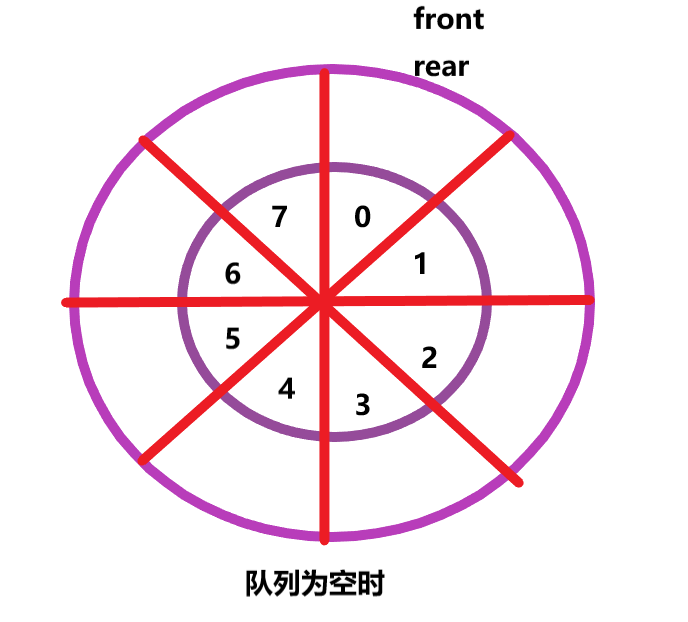
从 rear 位置处插入第一个元素 666 , front 不变,而 rear 往后走一个:
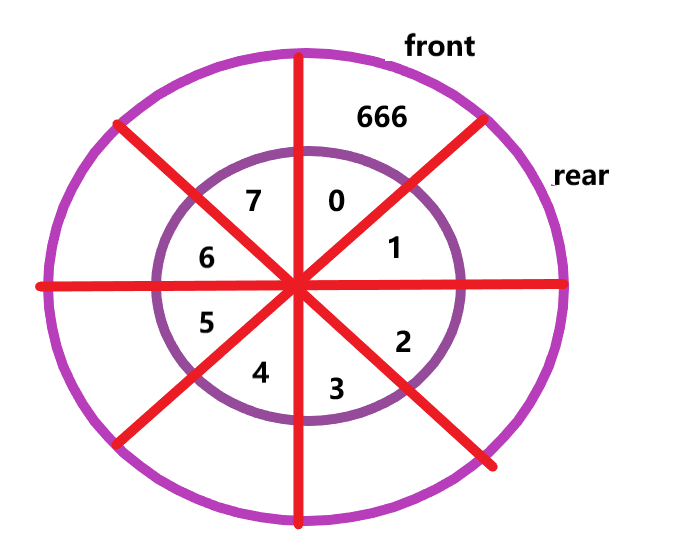
以此类推,将整个队列装满元素:
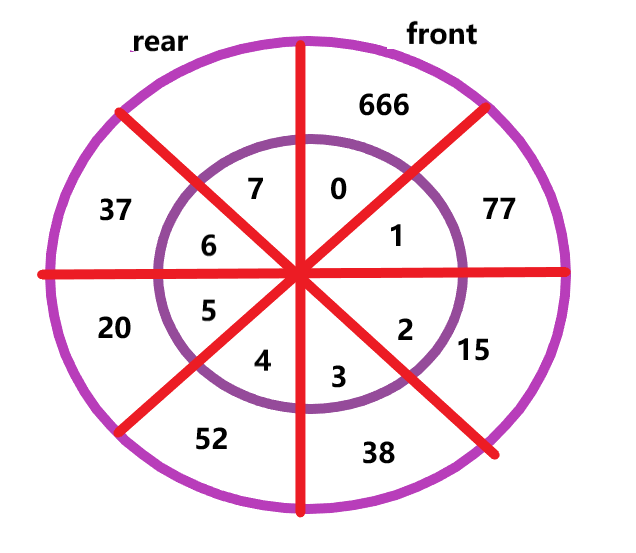
不知同学们发现没有,数组下标为 7 的位置是空的,但我在上面却说“满”,这是为何?
如果连下标为 7 的地方也放了元素,那么 rear 和 front 又重新指向同一个地方了,那如何与空区别?
上面两个问题,让我来一一解答:
其实判断循环队列是否满了,有很多方法,这里讲解两种。
第一种,牺牲一个空间,为后续判断是否满了做准备。
在这里我们先思考一个问题,循环队列,如何循环呢? 0 -> 1 -> 2 -> 3 - >4 ->5 ->6 -> 7 ->0 ,所以不管对于 front 还是 rear ,下标7 的下一个是 0 ,而不是8 ,也就是说,我们不能再使用 front++ ,或 rear++,而是
front = (front + 1) % arr.length
rear = (rear + 1) % arr.length
而最后一个空间不去用,就是为了区分空和满的状态,空是 front == rear, 而满就是 (rear + 1) % arr.length == front ,即 rear 的下一个位置,与 front 相同。此时队列为满,不再添加。除非在头部进行删除,这样 front = (front + 1) % arr.length , front 来到下一个:
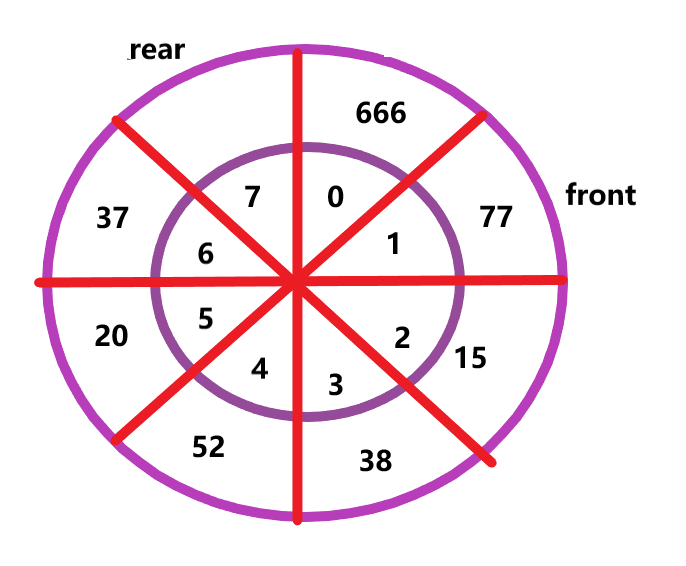
这时,又可以在尾部进行添加了。
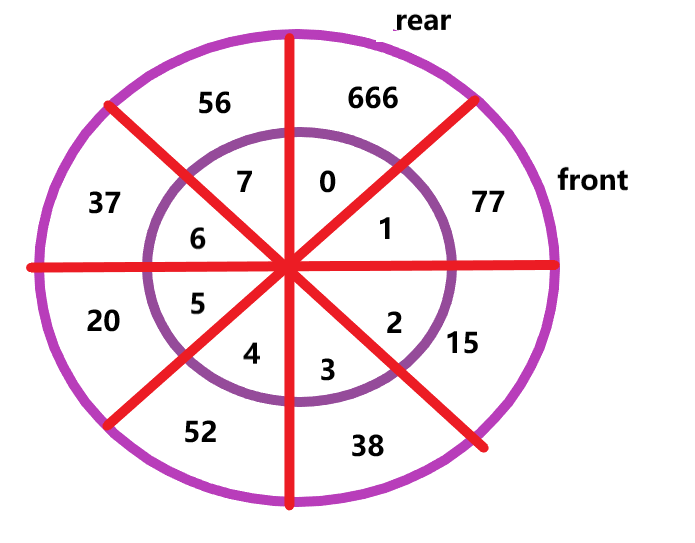
而第二种判断循环队列是否满的方法,是利用一个 size 变量,来记录队列已存储的总个数,这时候整个数组都可以放满。
下面的代码实现,是通过牺牲一个空间来判断满否:
class MyCircularQueue {
private int[] elem;
private int front;//表示队列的头
private int rear;//表示队列的尾
public MyCircularQueue(int k) {
//如果是以牺牲一个空间来作为判断是否满了的标准,这里可以多申请一个空间
elem = new int[k+1];
}
//入队列
public boolean enQueue(int value) {
if(isFull()){
return false;
}
elem[rear] = value;
rear = (rear + 1) % elem.length;
return true;
}
//出队列
public boolean deQueue() {
if(isEmpty()){
return false;
}
front = (front + 1) % elem.length;
return true;
}
public int Front() {
if(isEmpty()){
return -1;
}
return elem[front];
}
public int Rear() {
if(isEmpty()){
return -1;
}
return rear == 0 ? elem[elem.length - 1] :elem[rear - 1];
}
public boolean isEmpty() {
return rear == front;
}
public boolean isFull() {
return (rear + 1) % elem.length == front;
}
}2.5 双端队列(Deque)
双端队列(deque)是指允许两端都可以进行入队和出队操作的队列,deque 是 “double ended queue” 的简称。 那就说明元素可以从队头出队和入队,也可以从队尾出队和入队。
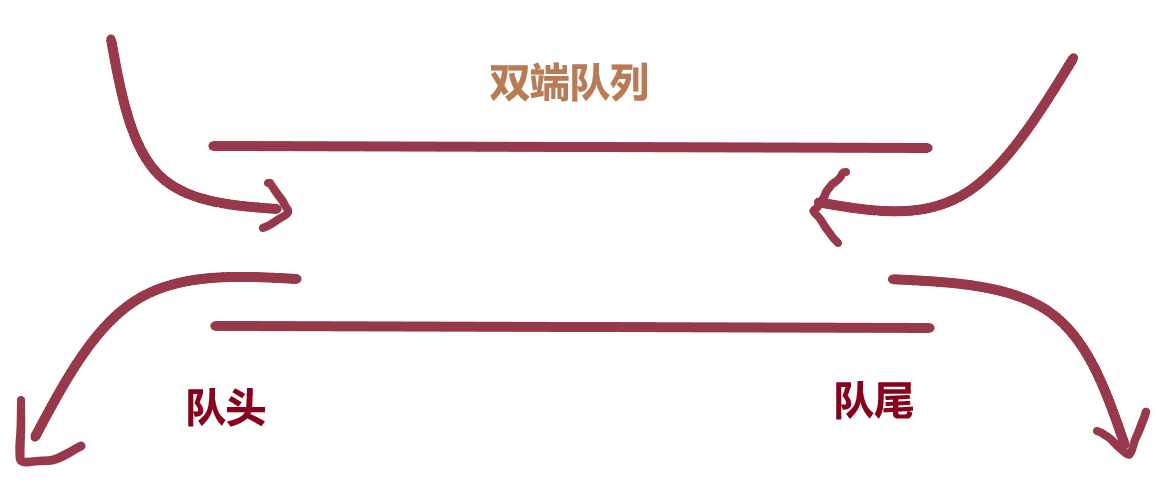
3. 栈和队列的相互实现
3.1 利用栈去实现队列
3.1.1 实现思路
申请两个栈:
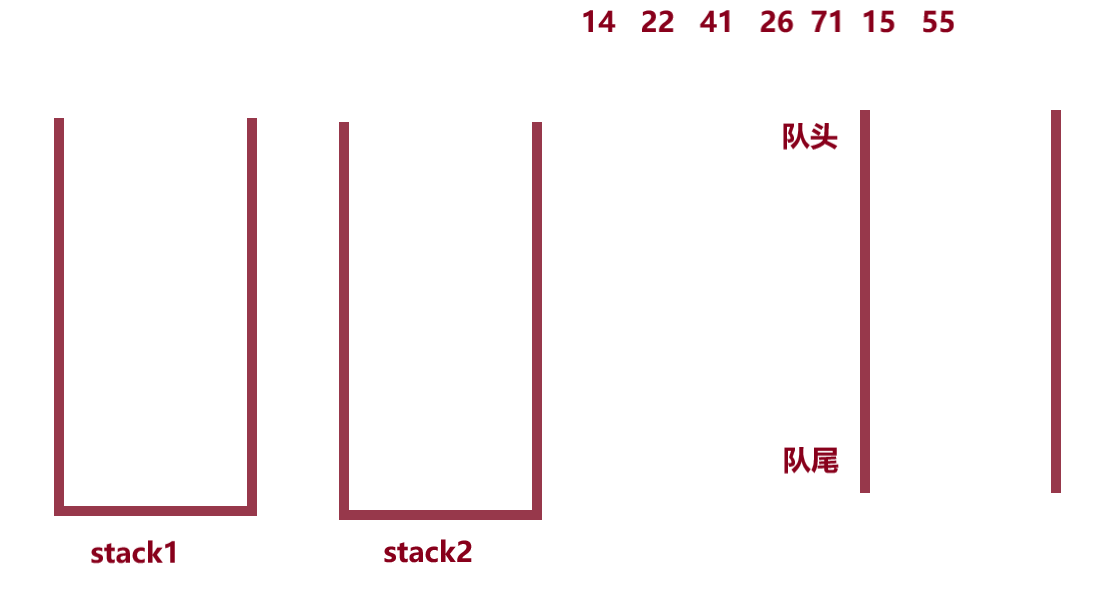
offer 时,如果是首次 offer,那么指定一个栈用来存放元素入队列,这里是 stack1 入队列,往后入队列就都往 stack1 去放。
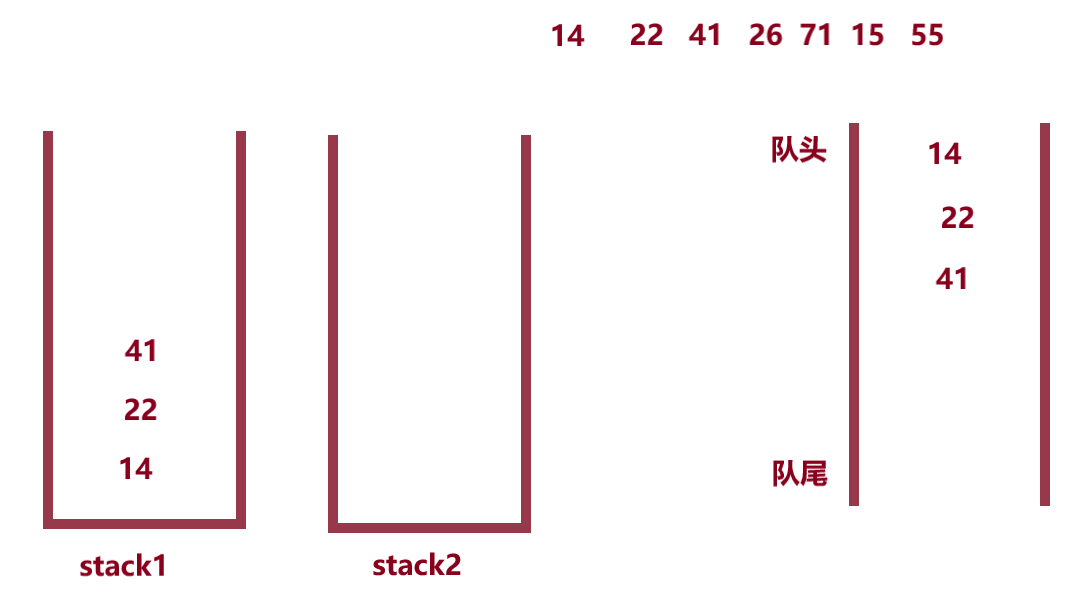
poll 时,找到非空的那个栈,这里是 stack2 ,往 stack2 依次放入 stack1 里的所有元素,最后 stack2 栈顶的元素就是队列 poll 的元素。
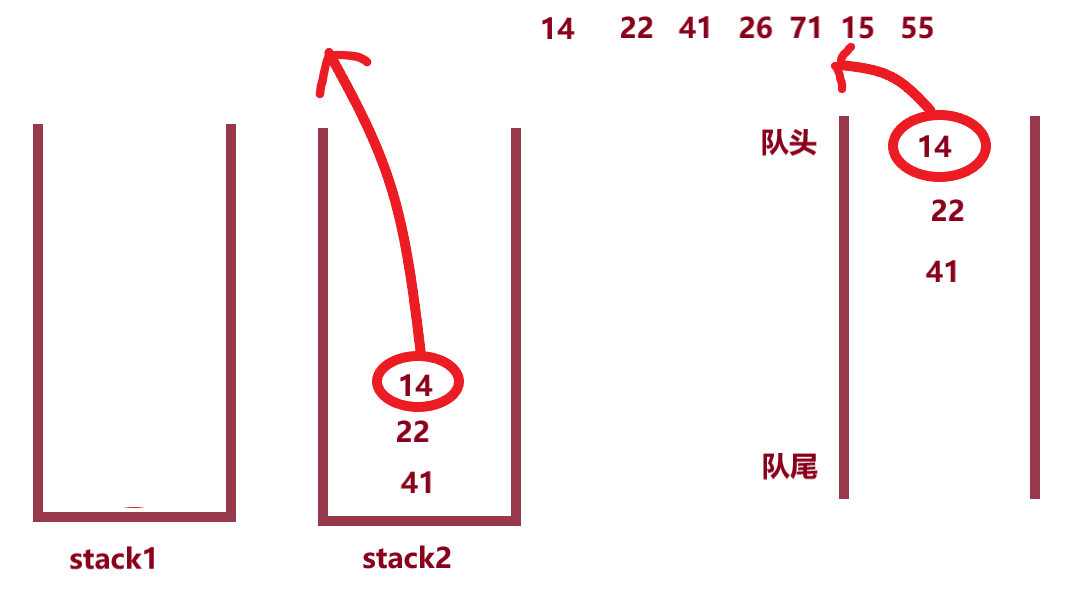
继续往队列中放元素,放入 stack1 中:
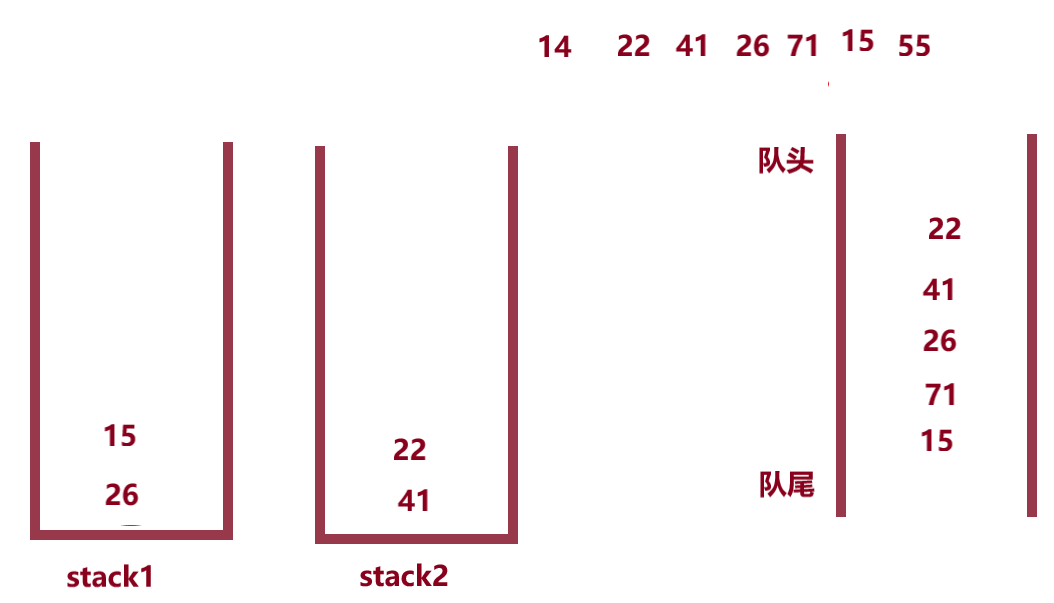
队列中继续删掉 22 和 41,那么 stack2 中依次出栈,为空:

队列继续出队列,由于 stack2 为空,而 stack1 不为空,那么将 stack1 中的元素依次放于 stack2 中,再依次出栈,一直到两个栈都没有元素为止。
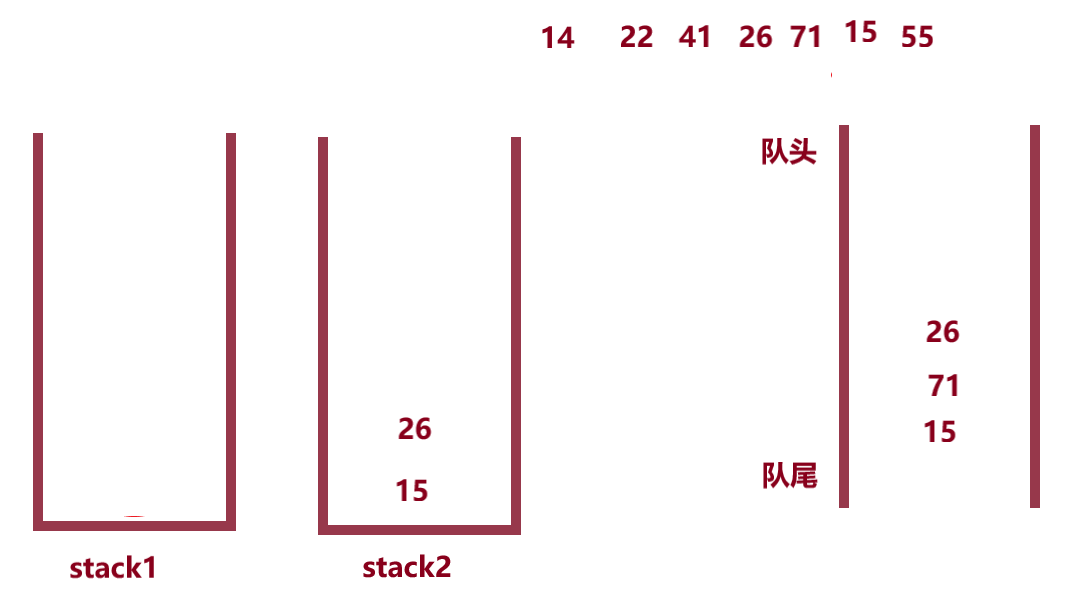
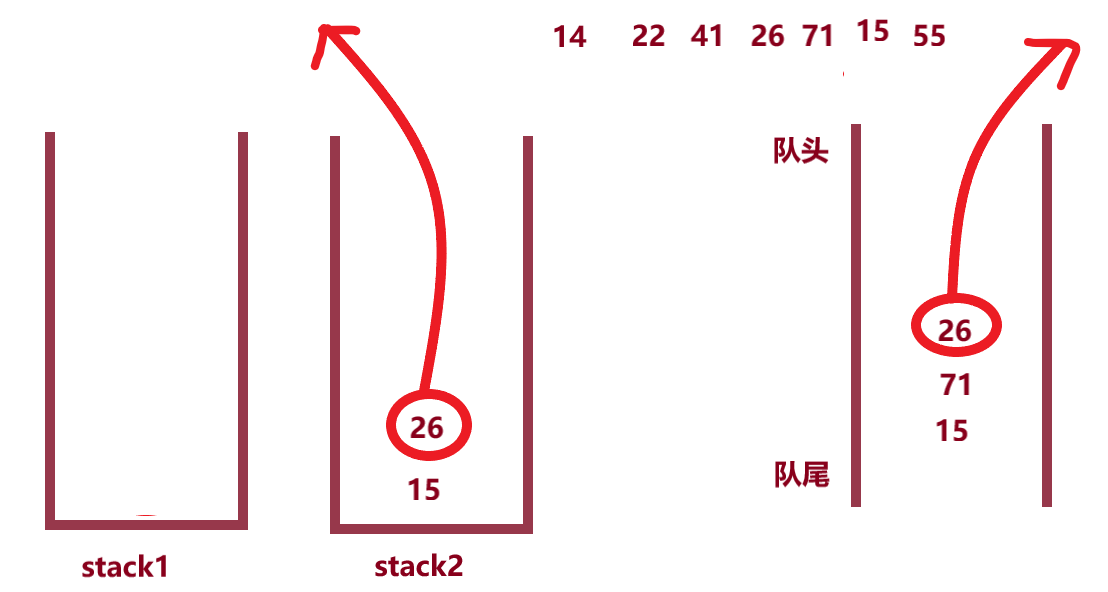
3.1.2 具体代码实现
import java.util.Stack;
public class MyQueue {
private Stack<Integer> stack1 ;
private Stack<Integer> stack2 ;
public MyQueue() {
stack1 = new Stack<>();
stack2 = new Stack<>();
}
//选择 stack1 存放入队列时的数据
public void push(int x) {
stack1.push(x);
}
//选择 stack2 存放出队列时的数据
public int pop() {
if(empty()){
return -1;
}
if(stack2.empty()){
while(!stack1.empty()){
stack2.push(stack1.pop());
}
}
return stack2.pop();
}
public int peek() {
if(empty()){
return -1;
}
if(stack2.empty()){
while(!stack1.empty()){
stack2.push(stack1.pop());
}
}
return stack2.peek();
}
public boolean empty() {
return stack1.empty() && stack2.empty();
}
}3.2 利用队列去实现栈
3.2.1 实现思路
申请两个队列,queue1 和 queue2 :
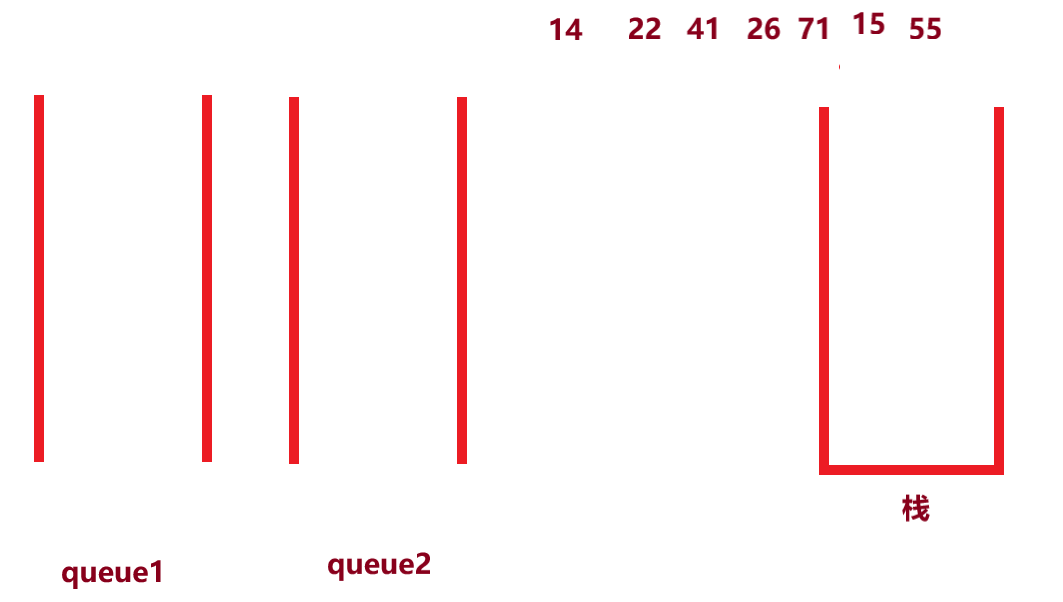
入栈时,若是首次入栈,则选一个空的队列存放入栈数据即可,这里选择了 queue1 :
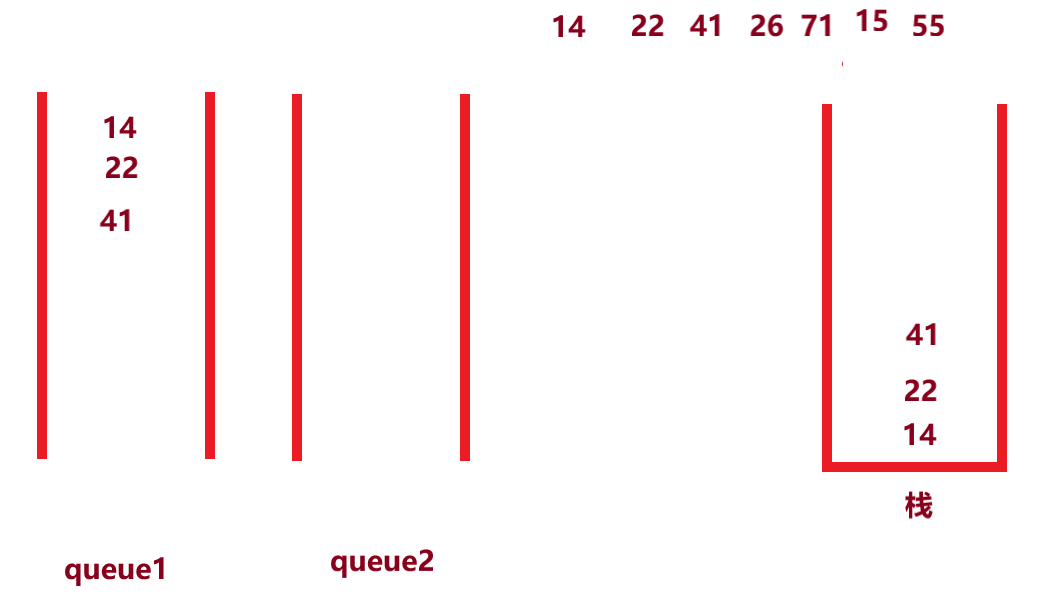
出栈时,找到那个非空的队列,如 queue1,队头元素 queue1.size() - 1 次出队列到一个空的队列中,如 queue2。然后让 queue1 中最后一个元素出队列,这就是出栈的元素。
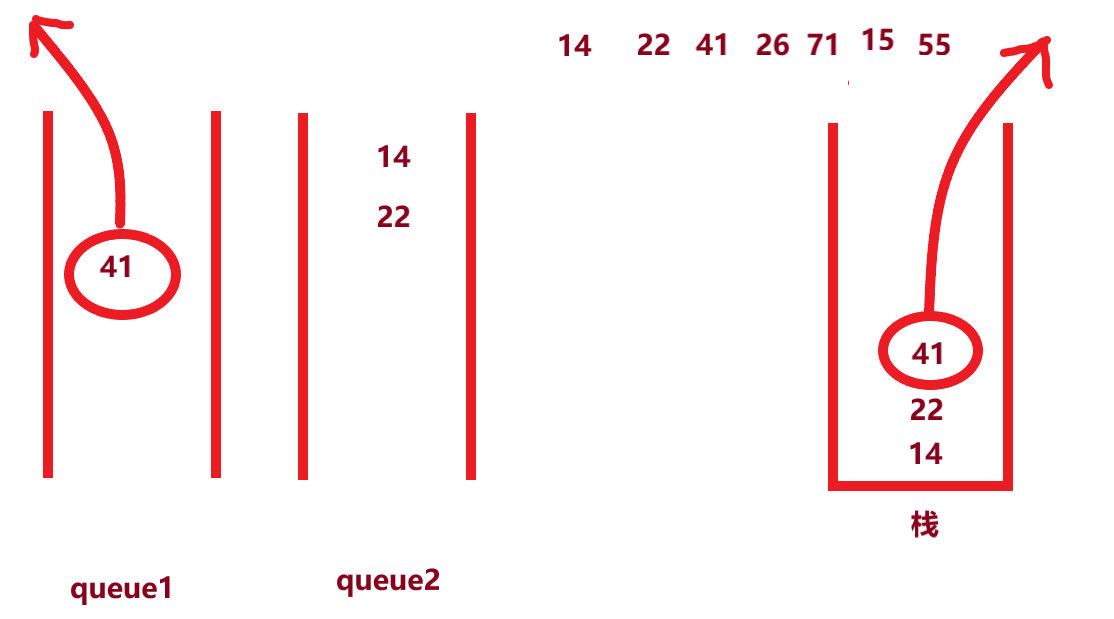
此时若是再入栈,那么将元素入队列到非空的队列中,如 queue2
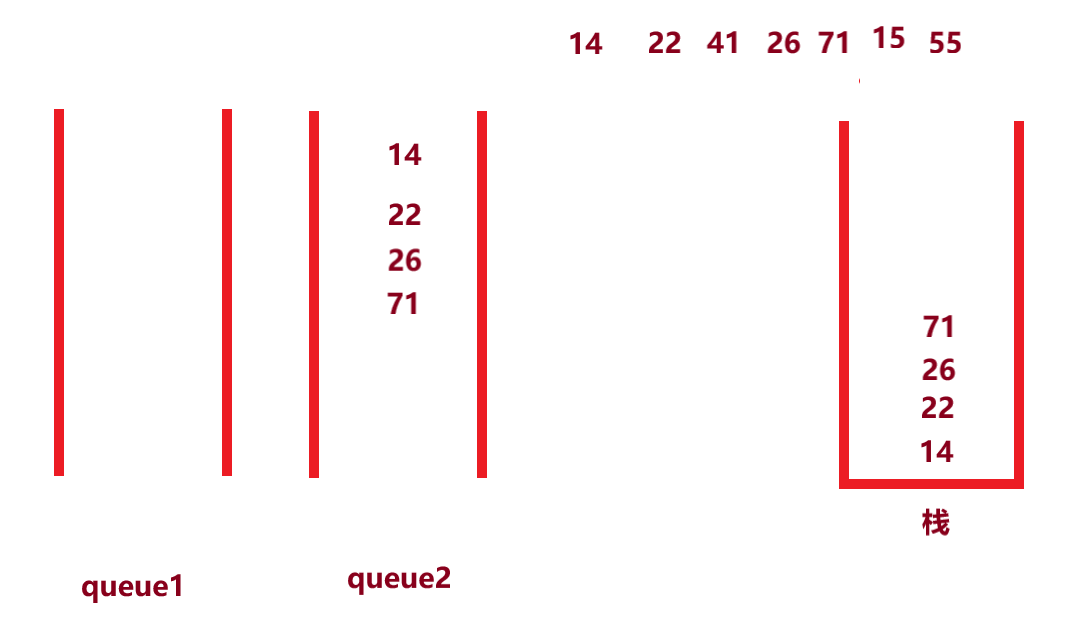
若是再出栈,便如步骤3 所示。
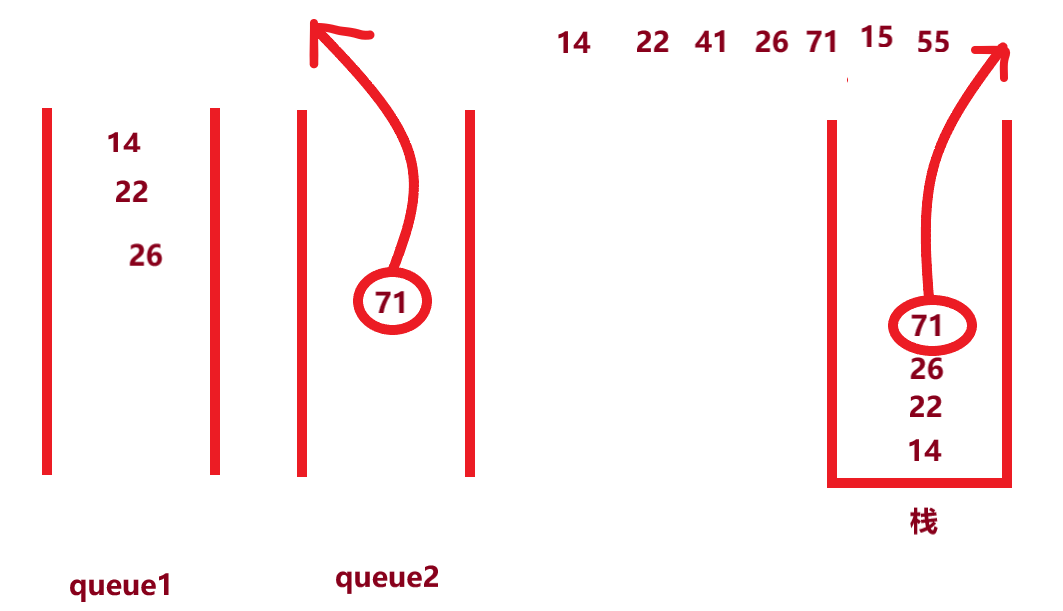
3、4 反复操作,一直到两个队列为空为止。
3.2.2 代码
public class MyStack {
private Queue<Integer> queue1 ;
private Queue<Integer> queue2 ;
public MyStack() {
queue1 = new LinkedList<>();
queue2 = new LinkedList<>();
}
public void push(int x) {
if(!queue1.isEmpty()){
queue1.offer(x);
}else if(!queue2.isEmpty()){
queue2.offer(x);
}else{
queue1.offer(x);
}
}
public int pop() {
if(empty()){
return -1;
}
if(!queue1.isEmpty()){
int size = queue1.size();
for (int i = 0; i < size - 1 ; i++) {
queue2.offer(queue1.poll());
}
return queue1.poll();
}else{
int size = queue2.size();
for (int i = 0; i < size - 1 ; i++) {
queue1.offer(queue2.poll());
}
return queue2.poll();
}
}
public int top() {
if(empty()){
return -1;
}
int val = -1;
if(!queue1.isEmpty()){
int size = queue1.size();
for (int i = 0; i < size ; i++) {
val = queue1.poll();
queue2.offer( val);
}
return val;
}else{
int size = queue2.size();
for (int i = 0; i < size ; i++) {
val = queue2.poll();
queue1.offer( val);
}
return val;
}
}
public boolean empty() {
return queue1.isEmpty() && queue2.isEmpty();
}
}